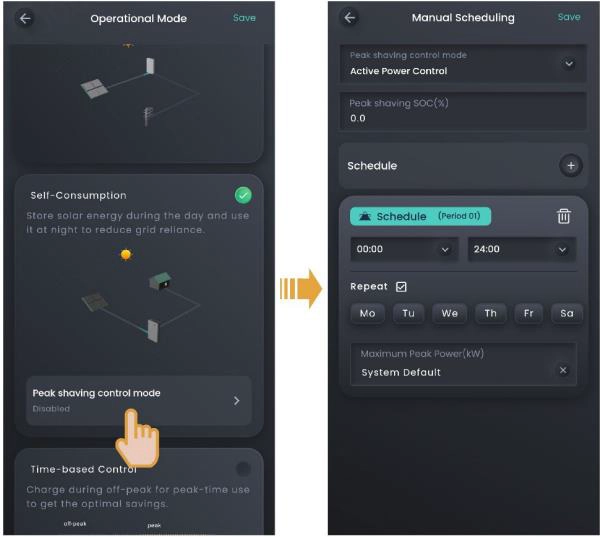Frequently Asked Questions
PointGuard Two Version RS485 - Important! Must check before installation!

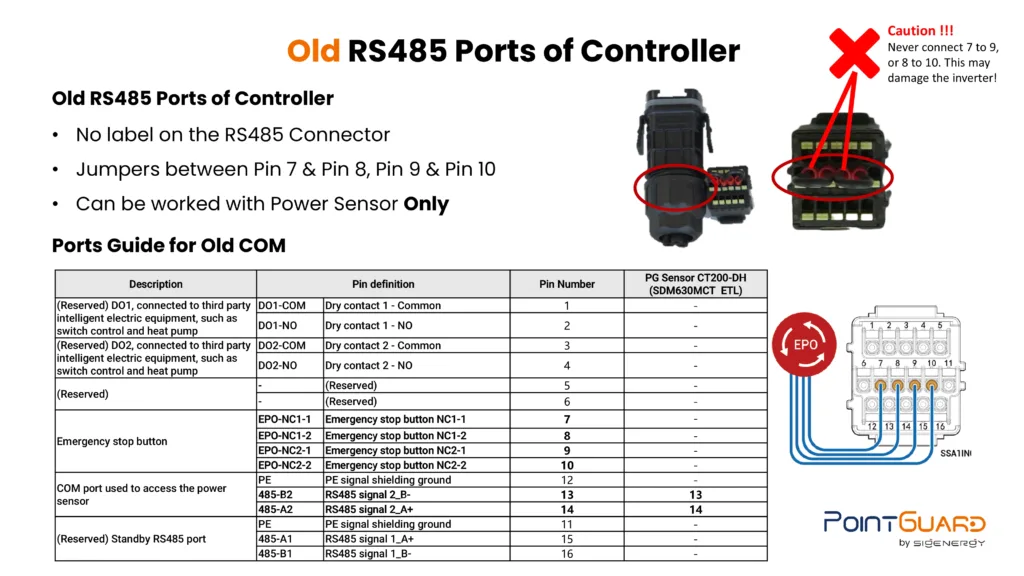
Does the PointGuard battery support a black start?
In general, Yes. It supports black start in both AC and DC coupled scenario even in off-grid.
In case your PV is DC coupled with a PointGuard inverter, if the battery runs out of power, whenever the sun comes up again, the battery will start charging directly from the solar panels and recover.
In case all the energy of the battery is used and the battery cannot start without an external power source. You will need at least one of the three options to make sure your battery is back online again.
1. Solar panels are connected to the MPPT side of the PG controller (the hybrid inverter). When sunlight appears again, solar panels can charge the battery and bring the system online again.
2. Use an external power generator as power source and connect to the Generator Port of the Loadhub. Then the battery will be charged and be online again.
3. Grid connection is recovered.
In case it is an off-grid AC coupled scenario, there is no PV connected from the DC side, and there is no grid connection. The user can setup a SoC to forcibly shutdown the system to reserve energy and a recovery time, for example, 10:00 AM. When the time comes to 10:00 AM the next morning, the sun comes out, the PointGuard battery can automatically start, providing voltage to the PV side (AC coupled) to activate the micro inverter or string inverter. Then the PV can start charging the battery from the AC side.
What are the breakers recommened to be installed in the Loadhub?
The PointGuard Loadhub does not restrict to a particular type of breaker. Customers can choose the product available in the local market, meeting safety standards and local regulations.
The Loadhub has inbuilt relays (picture on the left below) to control all the smart load positions. So the control of the smart load does not rely on any 3rd party product.
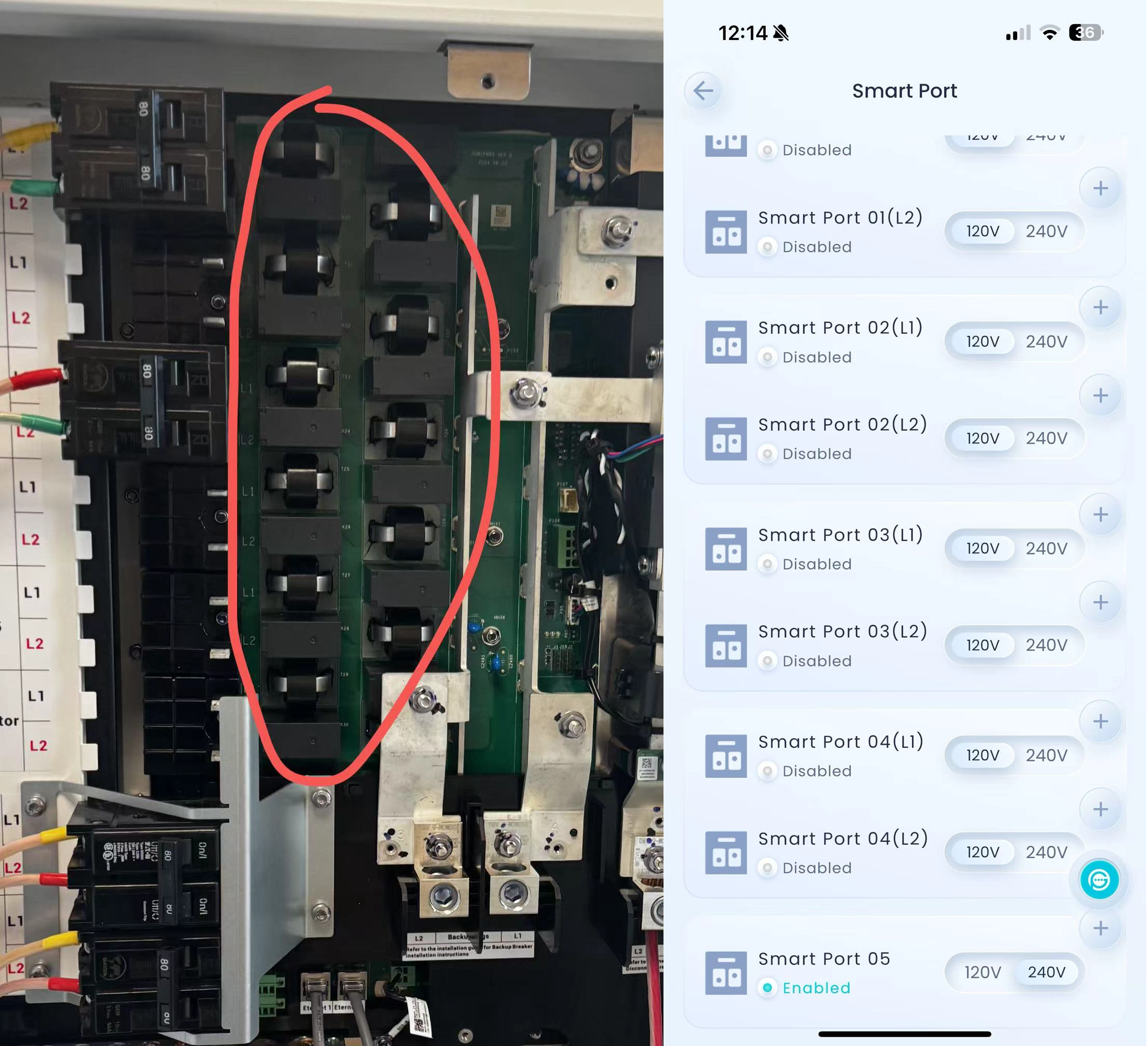
There are a total of 10 relays for the 5 double pole load positions. So there are 10 Smart Load Port that the user can control through the mobile APP. (As shown in the up right picture.)
PointGuard has tested Eaton breakers which work well with the Loadhub.

Does the PointGuard use a mechanical grid separation or a programmable solid state ATS?
For details, please refer to The PointGuard LoadHub Generator and Grid Mechanical Interlock Technical Paper.
What are the kW capacity options available for the Point Guard inverter? Requirement of ESA in Ontario
The PointGuard Controller (hybrid inverter) has single hardware for multiple capacities. The available capacities include 3.8kW, 4.8kW, 5.7kW, 7.6kW, 9.6kW and 11.4kW.
All these capacities are subject to the choice during the configuration of the inverter at the first time. After configuring with the selected output rate, the installer has to make a checkmark on the nameplate of the inverter, to identify which output rate is selected for this particular inverter.
The name plate of the PointGuard controller is as follow.
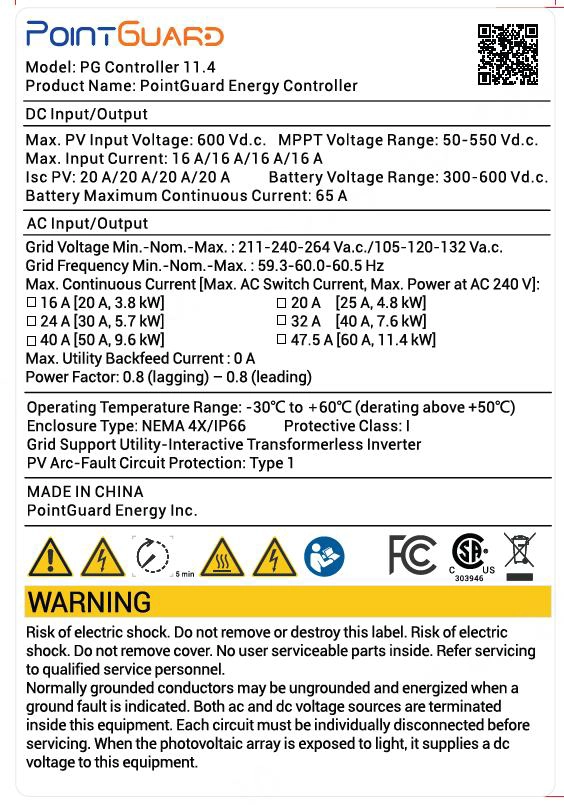
This flexibile configuration is recongnized by CSA and it is reflected in the certificiate of UL1741.
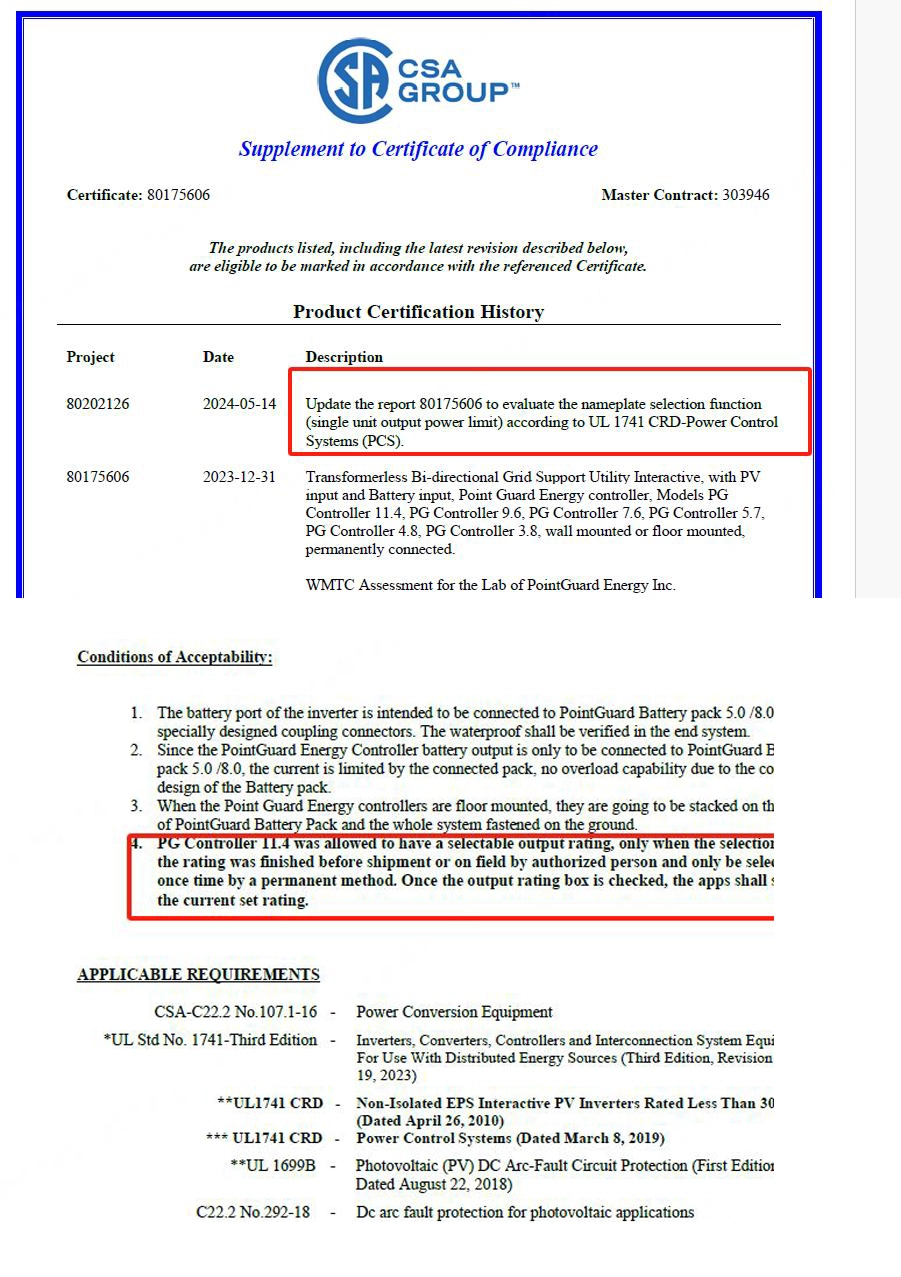
Before installing the unit, the installers are suggested to communicate with related local authority who is responsible for the final inspection. If they local authority has any concern or further questions that you don’t know. Please contact Solwel or PointGuard technical support directly.
How to save electricity bills in Peak Shaving - What is Peak Shaving?
The electricity bill in some regions is calculated as follows: Total electricity bill = Cost at peak power + cost for electricity usage + other costs. Wherein, peak power refers to the maximum power imported from the grid. You can set the maximum peak power imported from the grid in Maximum Self Consumption or TOU mode or Sigen AI mode during peak hours to reduce the electricity bill.
How to save electricity bills in Peak Shaving - How to work in Peak Shaving mode?
In Peak Shaving control mode, you can set the parameter “Peak Shaving SOC”, “Maximum Peak Power” and peak hours by Schedule.
A general idea of Peak Shaving is given through the following diagram of Battery SOC in the system. It is recommended that the Peak Shaving SOC more than the Backup Capacity. When Battery SOC ≥ Peak Shaving SOC, Power supply priority is based on the mode of your choose. If the mode is Maximum Self-Consumption, Batteries preferentially supply power to loads. If the current time is the charging time in TO U mode, batteries will be charging to Charge Cut-Off SOC preferentially from PV or power grid.
When Battery SOC < Peak Shaving SOC, the loads supply is preferentially from the power grid (No PV power generation), if the consumption exceeds the maximum pea k power , the excess power will be supplied by the batteries. (Batteries discharge power = Loads power – the maximum peak power .) If the consumption < the maximum peak power , batteries will be charging from the current battery SOC to Peak Shaving SOC. (Batteries charging power = the maximum peak power – Loads power.)
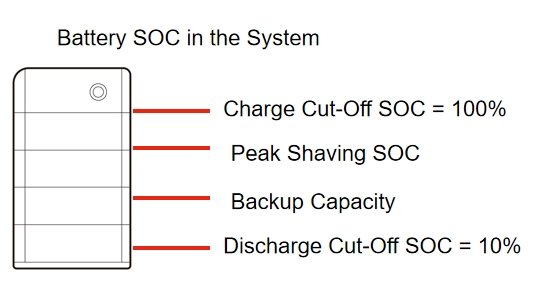
The following takes the maximum self-consumption mode and peak shaving in the maximum-self consumption mode as an example to learn how to set the parameter of peak shaving control mode.
Maximum Self-Consumption(Peak hours set to 18:00-21:00)
In Maximum Self-Consumption, Power supply priority: Batteries > Power grid. It is estimated that the batteries are fully discharged from 18:00 to 20:00 and the peak power drawn from grid after 20:00 is 5kW of the load power.

Maximum Self-Consumption + Peak Shaving (Peak hours set to 18:00 21:00)
In Maximum Self-Consumption and Peak Shaving, when battery SOC more than or equal to Peak Shaving SOC, it is preferentially from Batteries at 18:00-19:00 (based on the mode of Maximum Self-Consumption, or TOU, or Sigen AI). When battery SOC less than Peak Shaving SOC from 19:00 to 21:00 based on the size of the Peak Shaving SOC, if the consumption exceeds the maximum peak power (set to 3kW), the excess power will be supplied by the batteries.
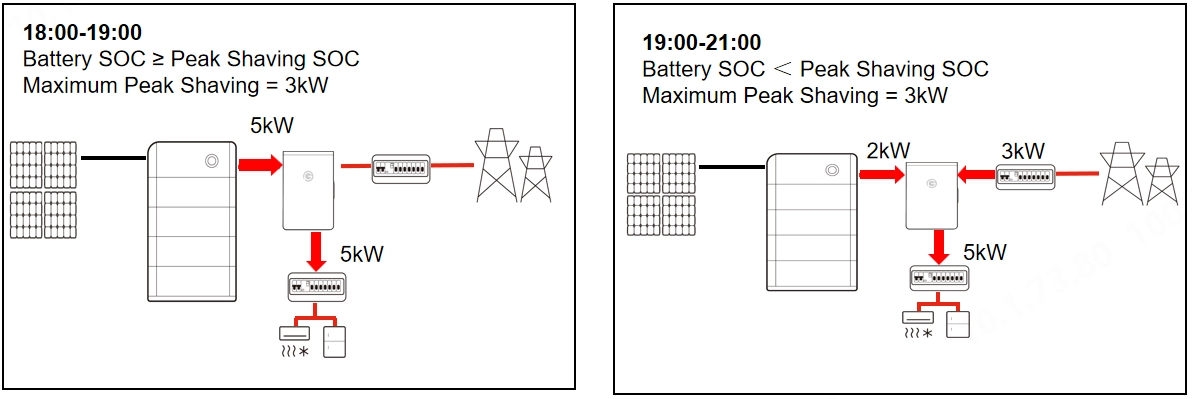
How to save electricity bills in Peak Shaving - How to set the Peak Shaving control mode?
You need to set the operating mode to Maximum Self-Consumption or TOU mode or Sigen AI mode firstly.
Then you can set the Peak shaving control mode in the operating mode.
Lastly, you can set the Peak Shaving control mode to Active Power Control in Manual Scheduling, and the parameter of Peak shaving SOC, schedule and Maximum Peak Power.
